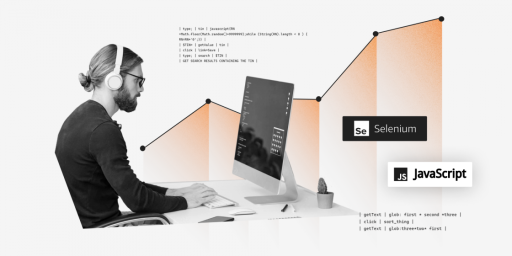The Capability Maturity Model Integration (CMMI) is a model that aids in identifying the strengths and weaknesses of an organization’s current processes and shows the way to improvement. CMMI’s primary goal is to create high-quality software.
CMMI is a technology offered by SEI that assists businesses in standardizing software development, testing, and deployment to improve the product’s quality. The implementation of standards that will assist raise the quality of their software products is supported by CMMI. According to CMMI, a complete model consisting of five “Maturity Levels” or three “Capability Levels” is essential to creating excellent software.
What does CMMI stand for
CMMI is a more advanced model of its CMM predecessor. It combines the best elements of each of the CMM’s distinct disciplines, Software People and Systems Engineering CMM’s, etc. Combining various fields following the standards becomes challenging since CMM is a reference model of established practices in a particular subject. CMMI is widely used because it enables the integration of many disciplines.
What are the levels of CMMI
An organization receives one of two ratings following a Class A appraisal: a maturity level rating or a capacity level rating. Maturity levels range from 1 to 5, with level 5 as the highest grade and the target businesses aim towards.
1. Initial Level
The processes at this CMMI level tend to be erratic and reactive. The organization is at its worst at this point due to the unpredictability of the environment and the likelihood of errors and ineptitude.
2. Managed processes
At maturity level #2, an organization has completed all the process areas’ specialized and general goals. In other words, the organization’s initiatives have ensured that processes are planned, carried out, measured, and controlled. Standards implemented at this level are usually as follows:
- Requirements Management, or REQM
- Project Planning (PP)
- Configuration Management, or CM
- Measurement and Analysis (MA)
- Process and Product Quality Assurance (PPQA)
- Project Monitoring and Control, or PMC
- Supplier Agreement Management (SAM).
3. Defined processes
Organizations take a more preventative approach than a reactive one at this level.
Managers are now aware of the flaws and how to fix them to enhance their operations. There are several KPAs of which helps to offer direction across projects, initiatives, and portfolios:
- Decision Analysis and Resolution, or DAR.
- Organizational Process Focus (OPF)
- Integrated Project Management (IPM) plus IPPD
- OPD stands for organizational process definition, while OT stands for executive training.
- Product Integration (PI)
- Risk Management: RSKM
- Validation, or VAL
- Technical Solution (TS)
- Verification, VER
4. Managed quantitatively
The company has reached a high maturity level and relies on predictable methods based on the stakeholders’ needs. The procedures are better organized, respectable, and exact. The firm anticipates risks and uses a data-driven strategy to address process flaws, and it is reflected in the following KPAs :
OPP – Organizational Process Performance
QPM – Quantitative Project Management
5. Optimizing
The organization is currently in a stable and adaptable phase. Now, the company is always striving for progress and seizing possibilities. In an expected environment, the company pursues “agility and innovation” at CMMI level 5, also known as the optimizing level.
Organizations reach a high degree of maturity when they reach Levels 4 and 5, where they are continually evolving to satisfy the demands of their clients and investors. Finally, they are about to achieve the CMMI objectives.
Why use CMMI and its benefits
To implement improvement initiatives, a model of how your company operates, the activities it needs, and the relationships between those functions are necessary. A model aids in talks about how and what can and should be changed by providing knowledge of organizational components. Using a model has the following advantages:
- Provided a structure and shared language to facilitate communication
- The years of experience are used
- Aided consumers in seeing the big picture while concentrating on the development
- Frequently supported by experts and educators
- Assistance in resolving conflicts by offering accepted norms
- Increased effectiveness and efficiency of test activities
- Aligned testing with organizational priorities and other project processes
- Improved both objective and perceived value of testing to the organization
- Helps increase ROI
- When it is adapted, businesses see improved success.
- CMMI is compatible with related methodologies such as ISO Standards, 6-Sigma, and ITIL.
- The model is an improving and evolving one
How to successfully implement CMMI
The CMMI paradigm encompasses more than just procedures. Businesses can use it to apply to individuals, teams, work groups, policies, and projects. To introduce CMMI into your company:
- Select trained personnel
- Make groups for the engineering process
- Engage CMMI consultants for advice
- Adopt quality procedures and methods
- Choosing the right tools
- Teach employees project management, configuration management, and quality assurance
- Put the CMMI paradigm into practice for a few projects
- Receipt of client comments and ratings
- Learn from the methods used and make them better
- Include additional CMMI-compliant projects in your portfolio
What is the CMMI methodology?
Carnegie Mellon’s Capability Maturity Model Integration (CMMI) contains management, measurement, and optimization underpinnings. Key process areas (KPAs) and key performance indicators are the levels at which these elements are applied (KPIs).
Several components are required to comprehend and describe the business processes around the installation and life cycle of the business intelligence build-out.
The industry of creating business information solutions must develop. To achieve it, the implementation team must be vested in BI (Business Intelligence) system. The best monitoring, recognition, measuring, and optimizing methods must be used, especially if the team wants to become and stay agile moving forward.
Optimization is the CMMI’s ultimate aim. Without metrics (quantitative measurements) or KPIs, optimization is impossible. Without the KPAs, or definitions of the main areas to be assessed, these KPIs cannot be met.
Conclusion
CMMI helps to create a beneficial environment for test managers and test leads, as well as a checklist for establishing procedures. Numerous real-world examples prove advantages of processes’ standardization in software testing and related fields. Although CMMI emphasizes testing more, it is not a paradigm specifically for test improvement. The entire development process includes verification and validation, ensuring that the product satisfies the client’s expectations, broadens the scope and visibility of the product lifecycle and testing operations. CMMI includes the best practices in measurement, risk management, and test management.



